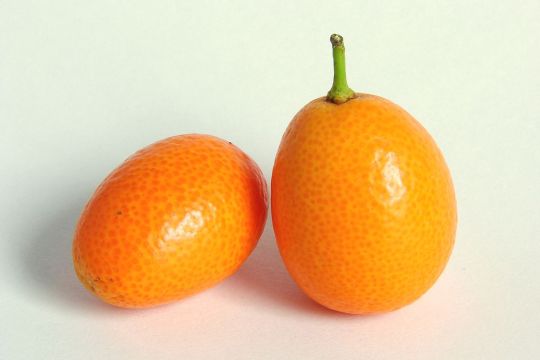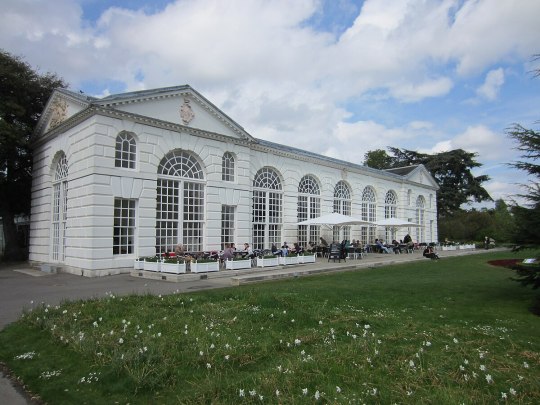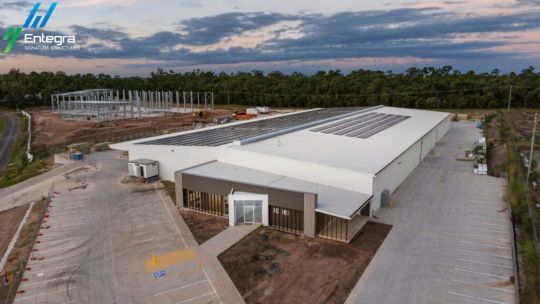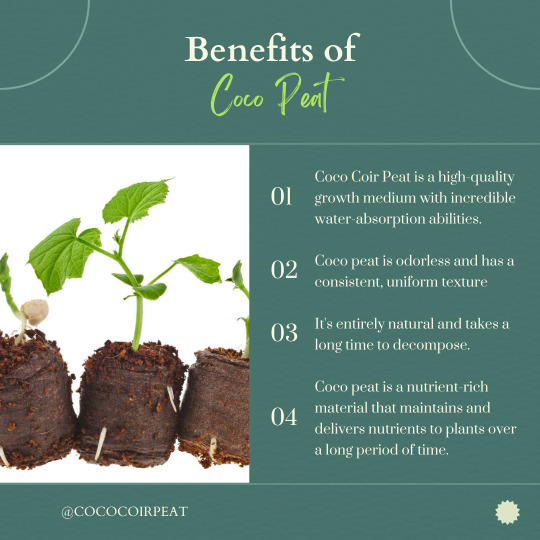#horticulture industry
Explore tagged Tumblr posts
Text
Big kudos to my coworker who asked my other coworker out at the company Christmas party. She’s a botanist, he’s an ecologist. If they ever have gardens together, they’re going to be so beautiful.
2 notes
·
View notes
Text
#refugees#iranian refugee#mehran mahdavi#pistachio industry#refugee success story#australia#agriculture#migrants#horticulture industry
1 note
·
View note
Text
Top Plastic Flower Pot Manufacturers in India: Elevate Your Garden with Quality Planters
Explore a curated list of premier plastic flower pot manufacturers in India, offering an array of durable, stylish, and eco-friendly options to adorn your garden. Discover reliable suppliers for all your gardening needs.

#plastic flower pot manufacturers#India#gardening supplies#plastic planters#flower pot suppliers#horticulture industry
1 note
·
View note
Text
The Squid Orange in Kelp Dome - What is it? How would it be grown?

The Squid Orange in Kelp Dome - What is it? How would it be grown?
Within The Art of Splatoon artbook, we see a lot of concept art for ideas and worldbuilding of the splatoon world. One of these concepts that I found the most interesting was the fruits and vegetables that would have been grown in Kelp Dome. They are all based on real life fruits/veggies with a few differences and usually squid themed. One of my favorites was the squid orange because of my personal interest in citrus production and because my family has tried their hand at growing citrus trees before. It got me wondering, what is it based on? And how would it theoretically grow in a greenhouse in kelp dome?
I should say that most of my knowledge of citrus production is based in America (since that’s where I study) so my writing may not reflect Japanese production styles. From what I read the general concepts are mostly the same, but intricacies like harvesting techniques may be different.
Design Origins

(A picture of a kumquat, image taken from here)
Although it is called an orange, the squid orange may be based on many different fruits in the citrus family (Rutaceae). The edible peel made me think of kumquats because they are commonly eaten fresh with the peel. However, while the peels are sweet like what was shown in the picture, the rind is often soft and rarely bitter. However, other citrus peels do fit the description of being bitter and hard, so the squid orange could be something of a hybrid between kumquats and other citrus species.
The albedo portion reminds me of navel oranges because of the similar belly button, or navel structure. Just for clarification, the albedo is the white and somewhat papery/spongy portion of citrus fruits, considered part of the peel. Navel oranges have a primary and secondary ovary when they grow. The primary ovary gives rise to most of the fruit while the secondary ovary is reduced and becomes a bump that looks like a navel. This part is technically edible, but not preferred and is often thrown away with the rest of the peel.
For the sake of simplicity, I’m just going to consider the squid orange under the sweet orange group (Citrus x sinensis) as opposed to other citrus crops.
The Orangery

(An orangery, from Kew Gardens in London. Image take from here)
Oranges and other citrus crops have a long history of cultivation indoors. Orangeries have existed since the 17th century were structures built specifically to grow citrus crops, usually in places where they wouldn’t naturally grow. Although orangeries can be considered distinct from other structures like greenhouses and conservatories, the terms are used interchangeably and as such I will be using the term greenhouse to describe orange production within indoor structures. Also, I will be talking about citrus production in general as opposed to specifically oranges because most of the cultivation practices are the same for many citrus species.
Greenhouse Production

(A Valencia orange tree in a greenhouse. Image taken from here)
Citrus plants are subtropical to tropical fruits, and as such they do not tolerate the cold at all. Many fruits will be killed below freezing, and the entire tree will be killed at temperatures below 28F. However, there are some citrus varieties and rootstocks that are more cold hardy, but even then it's quite marginal. The minimum temperature to avoid damage is 50 F, but some greenhouses won’t go below 65 F. The average temperature for ideal citrus production is around 75 F, but most varieties can tolerate up to 90 F or even up to 100 F.
Citrus trees can grow in most soils, but prefer sandy soils because they have better drainage. Most of them will not tolerate flooding and overly saturated water, so most greenhouses will do infrequent watering and soil/potting media with good drainage. Citrus require moderate humidity (around 50%), which shouldn’t be a problem in most greenhouses but they may need to supplement it with a humidifier if it is particularly dry. Pests and diseases may become a problem in greenhouse production, especially if trees are packed close together. Proper monitoring and sanitation, like using insecticidal soap and removing infected plant material, will help ensure these problems stay to a minimum.
The art book says that it would be eaten around June-November. While this aligns with harvesting for some cultivars of oranges, since the oranges are being grown inside a greenhouse their harvest time may be different. Oranges can be stored for about a month under the right conditions, so they could be realistically eaten any time of the year.
Just as a final note, most citrus trees in orchards grow up to 15 feet tall. Although I’m sure a big greenhouse like Kelp Dome can house a tree that tall, they may use dwarf varieties or prune the trees to make them more manageable.
Other Concerns with the World of Splatoon
Both inklings and octolings dissolve when submerged in water, so irrigation might be a concern. Although I mentioned beforehand that citrus trees are usually only watered sparingly, they do need to be watered eventually. I’d imagine greenhouse workers would need to wear some protective equipment when watering plants, or non-inkfish species would handle the watering. Also, I don’t know what pests would be around since a lot of the insects would be wiped out from the drastic climate change that takes place in the splatoon world, after the humans are wiped out.
Sources
#splatoon#splatoon 2#horticulture#now I'm hungry for oranges#citrus production is so interesting to me but I don't think I'll pursue it as a job since there's lots of problems with the citrus industry#citrus greening is a big problem all over the world and has wiped some entire orchards out#and they have a lot of sanitary regulations about what goes in and out of orchards#so I'm not dealing with that
4 notes
·
View notes
Text
Got tagged by @supermanstoddlerleash for this
rules: create a 24 hour poll with the names of your wips, and for whichever wins, write one sentence for each vote it gets
Most of my WIPs are either abandoned or in long term storage, I usually only work on one at a time (until it's done) so you too could ruin me by making me take out an old fic and rework it into something I'm more happy with writing.
Too sleepy to tag someone else. Peace
#the first 3 are the ones that actually have ideas behind them#the last 2 are mostly fucking around#but the Gotham By Gaslight one was good. I'll definitely come back to it.#cowboy Clark in the big city. horticultural shows. careful queer slang. titan of industry vs salt of the earth#green carnations. gbg movie robins. underground boxing matches. victorian dandy Bruce.#flop academic Ted Kord probably.#tiny printing house Daily Planet. the rise of yellow journalism. SLEEVE GARTERS.#if I end up writing it it'll be 100k pages and take like 3 years. which is why I'm afraid to write it#I just can't make that sort of commitment!!!#not without a goddamn cowriter or something#either way I'd love to get more done on PENIS QUEST but I keep stalling cause I have to research the science for the mad science#AND cause I have to read that FUCKING Booster/Harley plot. someone save me
5 notes
·
View notes
Text
HAY DAY MOBILE GAME:
I feel like everyone has that one mobile game that just irritates them for some reasons whatever that may be. For myself it’s Hay Day. Let’s start off with the most simplest one.
When you reach a certain level of the game you unlock different crops and even animals. One of the animals you can raise is pigs. Although, how the game is designed is when the pigs get fat you just put them in this sweating machine and that how you get the bacon you then sell. Huh? It’s bad enough that some kids still think chocolate milk comes from brown cows we really need no help from game developers.
Secondary, the fact that you can have a bread oven, run of a mill grill, and cake oven to make your food products for sale is just stupid. If you know anything about creating for products for consumption of the general public then you know food has to be prepared in a industry or functioning kitchen. How this game has it designed is that kitchen oven just sit out in the front lawn. The only places I’ve seen a oven sitting out in the front yard were people didn’t give it a second thought was a in a over grown yard. No one said anything cause you couldn’t see for the hip high grass.
In conclusion the game is dumb and I’m currently in level 15. In all seriousness don’t take anything in this post seriously. This was a funny post on how games tend to portray agriculture in a way that is too comical that we find it redundant.
All that being said have a good weekend. Remember to eat your biscuits and mind your own business.
Sincerely,
CaffeineCattleDude
#agricultural#bad games#what? lol#writing humor#funnystories#just observations#personal observations#why#mobile gaming industry#mobile gaming app#hay day#mobile gambling#not funny#not smart#farming#farmers#farming simulator#horticulture#aquaculture#funny blog#ok?#well then
2 notes
·
View notes
Video
n131_w1150 by Biodiversity Heritage Library Via Flickr: Barteldes Seed :. Lawrence, Kan. :Barteldes Seed Co.. biodiversitylibrary.org/page/46441411
#Barteldes Seed Co#Catalogs#Colorado#Denver#Flowers#Kansas#Lawrence#Nurseries (Horticulture)#Nursery stock#Seed industry and trade#Seeds#Vegetables#Mertz Library#The New York Botanical Garden#bhl:page=46441411#dc:identifier=http://biodiversitylibrary.org/page/46441411#Roses#bhlGardenStories#BHLinbloom#flickr#rose#peas#radishes#pea#radish#wax bean#waxbean#wax beans#vintage#antique
2 notes
·
View notes
Text
The Rise of Macadamia in Kenya: Is It the New Cash Crop Over Coffee?
“Discover how macadamia farming is transforming Kenya’s agriculture with higher returns, lower costs, and year-round income. Is coffee’s reign as the top cash crop over?” “Why Kenyan farmers are shifting from coffee to macadamia: Explore the benefits of instant payments, reduced maintenance, and stable global demand for this profitable nut.” “With more farmers choosing macadamia over coffee,…
#agricultural income#cash crops#coffee industry challenges#coffee vs macadamia#crop profitability.#horticulture Kenya#income stability#Kenya Agriculture#kenyan farmers#Kenyan nuts#macadamia benefits#Macadamia Farming#macadamia industry#macadamia market#sustainable farming
0 notes
Text

Top Construction Company Australia - Entegra Signature Structures
Discover the full potential of your construction projects with Entegra Signature Structures. We specialize in cutting-edge solutions for both residential and commercial endeavors, offering expert support every step of the way—from initial concept to final completion. For more details visit the link.
#construction projects#construction company Australia#Construction Solutions#Dairy Sheds#Industrial Sheds#Feedlot Sheds#Equine Arenas#Hay Sheds#Rural Farm Machinery Sheds#Horticulture Sheds and Buildings#Industrial Buildings#COLA’s#Cotton Sheds#Entegra Signature Structures
0 notes
Text
Hazards
Horticultural industries are innately hazardous. Most horticultural professionals work outside in all sorts of weather, regardless of what that weather might be; stormy, cold hot and so on. Some of us who grow horticultural commodities might occasionally work with hazardous chemicals, and many of us work exhaustingly long hours, and sometimes in the dark of night. Those who work with landscapes…

View On WordPress
0 notes
Text
i’ve horticultured too close to the sun and can no longer enjoy flowers shop AUs
#flower shop au#horticulture#fanficiton#nothings fun when the fic says things and my mind goes “actully the cut flower industry—#like stfu no one cares
0 notes
Text

Cultivate your plants the natural way with Coco peat, the key to successful hydroponics farming. Join the eco-friendly movement and experience the benefits of using coco peat in your hydroponics system. Say goodbye to soil and hello to a healthier, more productive harvest, and dive into the world of hydroponics farming with Coco peat
#coco peat#coco pith#coir peat#coco coir pith#coco peat block#garden products#hydroponics#horticultural work#royal horticultural society#coir substrate#floricultural#farming#agriculture#farms#permaculture#agricultural#business#entrepreneurship#startup#industry#b2b#cargo#export#import export business#manufacturing#greenhouses#grow medium#ecofriendly
1 note
·
View note
Text
Daniel Reitberg: Transforming Horticulture with AI-Driven Vertical and Urban Farming

Vertical Farming: Redefining Horticulture Cultivation
Vertical farming is revolutionizing the horticulture industry, and Daniel Reitberg, an esteemed AI expert, is at the forefront of this transformation. By utilizing AI algorithms and advanced technology, vertical farming systems optimize space utilization, enabling the cultivation of crops in vertically stacked layers. This innovative approach maximizes crop yields, conserves land resources, and offers sustainable solutions for urban environments.
Urban Farming: Cultivating in the Concrete Jungle
In urban settings, traditional farming faces limitations due to space constraints. However, Daniel Reitberg's expertise in AI-driven urban farming opens up new possibilities. By utilizing rooftops, balconies, and vacant spaces, urban farming brings agriculture to the heart of cities. AI algorithms regulate environmental conditions, nutrient levels, and irrigation systems, allowing for efficient and productive cultivation in urban areas.
Hydroponics: A Game-Changer in Horticulture
Hydroponics, combined with AI technology, is transforming the way crops are grown. Daniel Reitberg's AI-driven hydroponic systems optimize water usage and nutrient delivery, minimizing waste and maximizing crop growth. By providing precise control over environmental factors, such as pH levels and lighting, hydroponics with AI enables year-round cultivation, eliminates soil-related challenges, and ensures consistent high-quality yields.
The Future of Horticulture: AI's Role in Vertical and Urban Farming
Daniel Reitberg's pioneering work in AI-driven vertical and urban farming is shaping the future of horticulture. By combining vertical farming, urban farming, and hydroponics with AI, growers can overcome limitations, achieve sustainable agriculture practices, and meet the growing demand for fresh produce in urban areas. As AI continues to advance, experts like Daniel Reitberg will play a crucial role in driving innovation and ensuring food security through advanced farming techniques.
In conclusion, Daniel Reitberg's expertise in leveraging AI for vertical farming, urban farming, and hydroponics is revolutionizing the horticulture industry. By embracing these innovative approaches, growers can overcome space limitations, conserve resources, and cultivate high-quality crops in urban environments. As AI technologies advance, the future of horticulture will be characterized by sustainable and efficient farming practices, thanks to the visionary contributions of experts like Daniel Reitberg.
#artificial intelligence#machine learning#deep learning#technology#robotics#horticulture#farming industry#farming
1 note
·
View note
Text
Horticulture sheds New Zealand
Horticulture sheds New Zealand- we offer many different types of sheds that are perfect for your gardening needs. Our range of garden sheds are available in a variety of different sizes and styles, so you can pick the style and size that best suits your needs.
#horticulture sheds New Zealand#agricultural sheds North Island#industrial sheds Hamilton#workshop sheds Cambridge#agricultural steel buildings#New Zealand implement sheds Cambridge#shed construction North Island
0 notes
Note
My advice for getting a job in botany or horticulture is to start small, something like a nursery or an arboretum or a groundskeeping job, and make lots and lots of friends. Talk to the truck drivers and your coworkers and your bosses and the customers. If you’re in a college or university environment, make friends with the professors. Ask lots of questions, show interest and initiative. The green industry can be a bit cliquey, and the more connections you have, the sooner you hear about job opportunities. And: most laboratory jobs require at least some schooling, but community colleges have excellent programs for all ages. Good luck!
^^ This for sure. the job i had full time until I quit, i got as a student in college and stayed on when i graduated.
my general impressions are that if you want a family or high stability, commercial ag is the way to go; there's higher pay and better benefits, especially if you're in the breeding side putting stuff into spreadsheets or working in a lab etc. if you care less about that and want a stable job that doesn't pay as much but might have just as good benefits, government jobs and regulation work tends to skew in that direction. and if you want to full on follow your dreams you can do academia, but your immediate future will rely more on grants and stuff you have to continuously push for, rather than just clocking in to a 9 to 5; this means that you also are subject to other pressures like needing to produce more papers in things you might be less interested in, etc.
268 notes
·
View notes
Text

The Water-Lily Pond (1899) 🎨 Claude Monet 🏛️ The National Gallery 📍 London, United Kingdom
For Monet, gardens offered a refuge from the modern urban and industrial world, although he and his fellow garden enthusiasts benefited from modern advances in botanical science that were creating new hybrid flowers in a wide choice of shapes and colours that could be produced on an almost industrial scale. He made modest gardens in the homes he rented in Argenteuil and Vetheuil in the 1870s, but from 1883, when he moved to a rented house in Giverny, about 50 miles to the west of Paris, he had more scope to indulge his passion for plants. He became a dedicated gardener with an extensive botanical knowledge, and sought the opinions of leading horticulturalists. As Monet’s career flourished his increasing wealth enabled him to fund what became a grand horticultural enterprise: by the 1890s he was employing as many as eight gardeners.
Monet began by refashioning the garden in front of the house, the so-called ‘Clos Normand’, replacing the existing kitchen garden and orchard with densely planted colourful flower beds that were filled with blooms throughout the seasons. He was able to buy the house in 1890, and three years later he purchased an adjacent plot of land next to the river Epte beyond the railway line at the edge of his property. The plot had a small pond with arrowhead and wild water lilies, which he wanted to turn into a water garden with a larger lily pond ‘both for the pleasure of the eye and for the purpose of having subjects to paint’.
The idea may have occurred to him after he had seen the water garden at the 1899 Exposition Universelle in Paris created by the grower Joseph Bory Latour-Marliac, who bred the first colourful hardy waterlilies. Monet began by requesting permission from the Prefect of the Eure to dig irrigation channels from the Ru – a branch of the Epte – to feed his pond, but the Giverny villagers objected, fearing it would contaminate the water and that the foreign plants would poison their cattle. Monet was furious, but three months later permission came through and he began to enlarge the existing pond, replacing the wild water lilies with Latour-Marliac hybrids available in yellows, pinks, whites and violets.
The pond was enlarged on further occasions – in 1901 and 1904 – tripling the size of the water garden. Together with the flower garden on the other side of the railway track it became the principal preoccupation of the last 26 years of Monet’s life. While the Clos Normand garden was laid out along fairly traditional lines, harking back to the formal French gardens of seventeenth-century Europe, with a central alleyway and geometrically arranged beds, the water garden was more Eastern in inspiration. Its less regimented, more natural design and more muted colours created a quieter, meditative atmosphere. Monet erected a Japanese bridge over the western end of the pond that took its inspiration from the bridges in ukiyo-e Japanese prints. He was a keen collector of these prints and he owned a copy of Hiroshige’s Wisteria at Kameido Tenjin Shrine (1856), one of the many prints that features a curved bridge. In a more general sense, the water garden reflected Monet’s admiration for the Japanese appreciation of nature.
Monet had to wait for his water garden to mature before he could begin to paint it in earnest. As he later recalled: ‘It took me some time to understand my water-lilies. It takes more than a day to get under your skin. And then all at once, I had the revelation – how wonderful my pond was – and reached for my palette. I’ve hardly had any other subject since that moment.’ In total, Monet painted 250 canvases of his water garden. Around 200 of these represent water lilies floating on the surface of the water, while the remainder also show the Japanese bridge, the weeping willow trees and wisteria and the irises, agapanthus and day lilies on its banks. In all these pictures Monet was painting a subject that was already ‘pictorial’ – a landscape that had been carefully composed according to his personal aesthetic. The National Gallery has three further paintings of the water garden :Water-lilies, setting sun; Irises; and Water-lilies.
Monet painted three views of the Japanese bridge in 1895, not long after it had been constructed, but then took a break from the subject, only returning to it in 1899. By now the pool was overhung by vegetation and surrounded by plants, but to judge from contemporary photographs it was never as enclosed as Monet painted it, and he exaggerated the feeling of claustrophobia. In December 1900 he exhibited 12 paintings at Durand-Ruel’s gallery in Paris, all of which showed more or less symmetrical views of the Japanese bridge.
In this painting, as in the others in the series, we are looking down onto the surface of the water, where the lily pads float into the distance, meeting the dense foliage on the far bank. Weeping willows are reflected in the pond and clumps of iris border its banks. The perspective seems to shift so that it is hard to find a single focal point; it is as though we are looking up at the bridge but down on the waterlilies. The picture, like the water itself, seems to oscillate between surface and depth. The mainly vertical reflections provide a counterpoint to the horizontal clumps of the lily pads. Different colours, applied with thick brushstrokes, are placed next to each other. This way of painting has more in common with Monet’s early Impressionist works than his more recent paintings of mornings on the Seine, where he had used softer, more blended strokes to convey hazy atmospheric effects.
The Japanese bridge series marked a turning point in Monet’s art. From now on his subjects were painted from an increasingly confined viewpoint, conveying the sense of an enclosed world. In later paintings of the pond, he would dispense with the banks and bridge altogether to focus solely on the water, the reflections and the water lilies. The culmination of Monet’s water lily paintings were the Grandes Dėcorations, 22 enormous canvases each over two metres high and totalling more than 90 metres in length, which he completed months before his death and donated to the French state. These are now on permanent display in two oval rooms in the Musée de l’Orangerie, Paris.
#The Water-Lily Pond#1899#Claude Monet#The National Gallery#London#United Kingdom#oil painting#painting#oil on canvas#Modern art#Impressionism#french#art#artwork#art history
127 notes
·
View notes